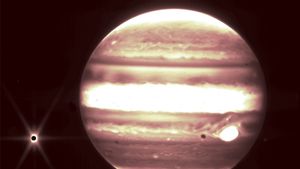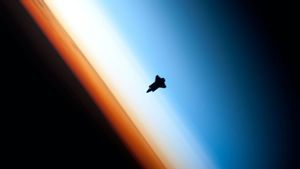JAKARTA - NASA's spacecraft, dubbed the Double Asteroid Redirection Test (DART), will deliberately hit an asteroid, and is now approaching its target.
Currently, the DART aircraft are heading for Dimorphos, which is a small planetary moon of a synchronized system, with Didymos as the main asteroid.
Astronomers discovered Didymos more than two decades ago. In Greek it means "swimming", referring to how asteroids formed an asteroid system with smaller asteroids or moons. Didymos nearly half a mile (0.8 kilometers). Meanwhile, Dimorphos is 525 feet (160 meters) in diameter, and his name means two forms.
The asteroid doesn't actually pose a threat to Earth, but it is the perfect target to test the possible impacts if the asteroid is on track and is ready to hit Earth.
DART will meet the space rock on September 26 following its launch 10 months ago. Currently, the DART aircraft has deployed a small satellite that will take photos when the collision occurs.
VOIR éGALEMENT:
The satellite, called LICIACube or Light Italian CubeSat for Imaging Asteroids, was removed from a spring box in DART recently.
We hope to receive the first full-frame image and process it a few days after the impact of DART. We will then use it to confirm the impact and add relevant information about the bursts that produced the true value of our photo", said project manager LICIACube for the Italian Space Agency, Simone Pirrotta.
Launching Digital Trends, Monday, September 19, when DART hits an asteroid, LICIACube will be able to capture images soon after using the two cameras inside, namely LICIACube Unit Key Explorer (LUKE) and LICIACube Explorer Imaging for Asteroid (LEIA).
For information, the spacecraft recently caught the first Didymos at a glance using an instrument called the Didymos Reconnaissance and Asteroid Camera for Optical navigation, or DRACO. It was about 20 million miles from the asteroid system when taking pictures last July.
The English, Chinese, Japanese, Arabic, and French versions are automatically generated by the AI. So there may still be inaccuracies in translating, please always see Indonesian as our main language. (system supported by DigitalSiber.id)


















